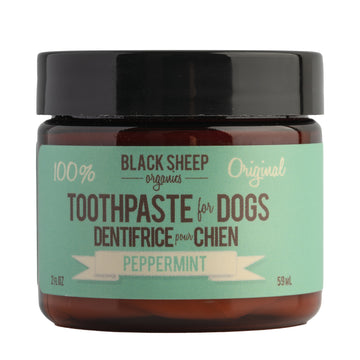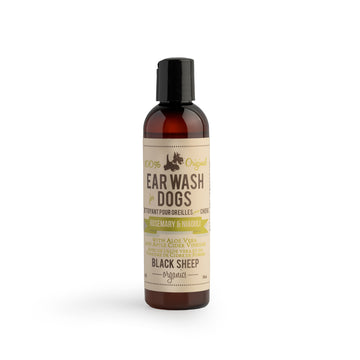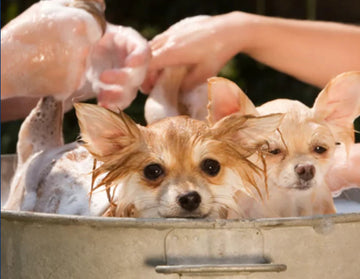Beyond the Shivers: Can a Warm Bath Be a Treat for Your Dog?
Apr 08, 2024
Bath time – for many dog owners, it's a battle fought with shampoo suds and nervous whimpers. Especially in the summer, the instinct might be to grab the hose or blast them with cool water outdoors. But what if a warm bath could be the secret weapon to a happy bath time for your pup?
Believe it or not, a carefully controlled soak in lukewarm water can be far more pleasant (and beneficial) than you think. That’s why in this post we will explore how warm bath might just transform bath time from a chore into a treat.
Do Dogs Prefer Warm or Cold Water for Baths?
Unlike us humans, who can efficiently regulate our body temperature, dogs aren't quite as adept. They rely on panting, sweating through their paws, and seeking shade to stay cool. This physiological difference is crucial when considering bath time temperatures for our furry companions.
The Science Behind the Shivers: Why Cold Water Isn't the Answer
While a refreshing dip might seem appealing on a hot day, cold water can actually be uncomfortable for dogs. Studies have shown that exposure to cold water can constrict blood vessels in the skin, hindering their ability to regulate body temperature. This can lead to shivering, which is the body's attempt to generate heat.
Beyond Breed: Tailoring Bath Temperature to Your Dog's Unique Needs
It's important to remember that not all dogs are created equal. Breed, size, and coat type can all influence their preference for bath water temperature.
- Breed: Breeds originally from colder climates, like Siberian Huskies or Alaskan Malamutes, might have a slightly higher tolerance for cooler water. However, even these breeds shouldn't be subjected to a frigid bath.
- Size: Smaller dogs tend to lose heat faster than larger breeds. So, for Chihuahuas or Yorkies, a lukewarm bath is even more essential to prevent them from getting chilled.
- Coat Type: Dogs with thick double coats, like Samoyeds or Chow Chows, might have a bit more insulation, allowing them to handle slightly cooler water compared to their short-haired counterparts.
Finding the Sweet Spot: The Ideal Bath Temperature for Dogs
So, what's the magic number? According to veterinary professionals, the ideal bath water temperature for dogs falls between lukewarm (95-100°F) and slightly warm (100-105°F). This temperature range is comfortable for most dogs and effectively removes dirt and debris without stripping their natural oils.
Do Dogs Like Warm Baths?
While a dog's preference for water temperature can vary, how can you tell if your furry friend secretly enjoys a steamy soak? Let's talk about some common signs in this section.
Decoding Doggy Delight: Signs Your Pup Might Be a Secret Bath-Time Enthusiast
Unlike humans who can readily express their preferences, deciphering a dog's enjoyment of a warm bath requires some detective work. But fear not, here are some subtle signs your pup might be relishing their spa treatment:
- Relaxation Station: Does your dog seem noticeably calmer and more at ease during a warm bath compared to a quick, cool rinse? Warm water can soothe sore muscles and itchy skin, promoting a sense of relaxation.
- The Happy Wiggles: After the bath, does your dog erupt in a post-bath zoomies session? This burst of playful energy could be their way of expressing relief and happiness after a pampering session.
- Leaning In: Does your dog press their body against the tub or lean into the water stream during the bath? This could indicate they find the warm water comforting.
Turning Bath Time into Tail Wags: Tips for a Positive Soak
Here's how to transform bath time from a battleground into a positive experience for your dog:
- Calm Vibes Only: Keep the bathroom quiet and free of distractions. Soft music can create a relaxing atmosphere.
- Just the Right Temperature: As discussed earlier, lukewarm to slightly warm water is ideal for canine comfort.
- Gentle Touch, Happy Reinforcement: Use gentle petting and soothing words throughout the bath. Reward good behavior with treats to create positive associations.
- Drying Done Right: Use a soft towel for drying, or let your dog air dry in a warm room. Some dogs enjoy the gentle breeze of a blow dryer set on low heat (always monitor them closely).
Comparing Warm Baths to Other Dog-Care Methods in Summer
As the mercury rises, ensuring our canine companions remain comfortable and cool becomes a priority for every dog owner. Here, we delve into an analysis backed by scientific insights and practical advice to ensure your dog's well-being during summer.
The Great Rinse Off: Weighing the Pros and Cons of Outdoor Showering
Outdoor showering can be a refreshing way to cool down a dog on a hot day. Here's a breakdown of its advantages and disadvantages:
Pros:
- Quick and Convenient: For busy pet owners, a quick hose down can be a fast way to cool off a dog.
- Accessible: No special equipment is needed, making it a readily available option.
Cons:
- Potential for Chilling: Exposing your dog to cool water for an extended period can lead to shivering and discomfort, especially for smaller breeds or those with thin coats.
- Doesn't Address Underlying Issues: While it cools them down, it doesn't necessarily clean their coat or address skin irritation caused by summer allergens.
- Risk of Shampoo Misuse: Using harsh shampoos outdoors can be detrimental to your dog's skin and coat health, and proper rinsing can be difficult.
- Potential environmental pollution:Shampoos with chemicals could cause environmental pollution when used in your yards or on a lawn. Try use organic dog shampoo if you have to shower your pet outdoors.
Summertime Safety Tips for Bathing Your Dog
No matter which method you choose, keeping your dog's safety in mind is paramount:
- Avoid Midday Heat: Bathe your dog during cooler mornings or evenings to prevent overheating.
- Skip the Hot Water: Always use lukewarm water, never hot.
- Gentle Does It: Use gentle shampoo and avoid harsh scrubbing.
- Thorough Drying is Key: Use a soft towel for drying, or let your dog air dry in a cool, shaded area. Consider a low-heat blow dryer setting for some dogs (always monitor them closely).











